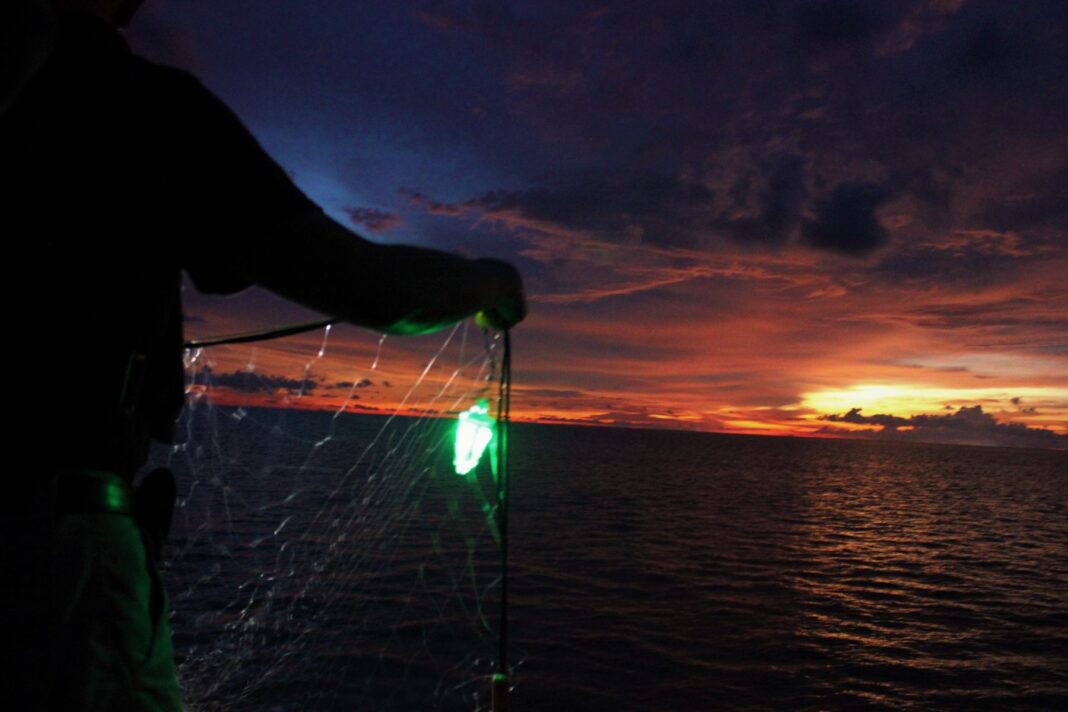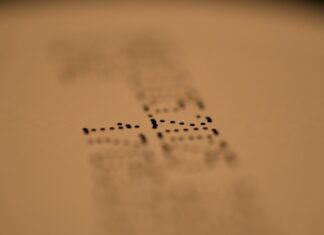Overfishing is one of the biggest problems today. Large numbers of marine animals are not caught specifically, but are caught as by-catches. When fishermen catch another creature in the net, it is often of no value to them and will die unnecessarily. Unwanted catches include a range of endangered species. Is it possible to prevent unwanted catches from entering the fishing net? Green lights attached to fishing nets can prevent this problem.
Illuminating gillnets with LED lights
Scientists including John Wang of the National Oceanic and Atmospheric Administration (NOAA) report in Current Biology that’s exactly what they have found in the form of green LEDs dotted along nets’ floatlines. Gillnets are one of the most extensively used fishing gear in coastal regions throughout the world’s oceans, but often catch other animals not targeted by fishers. These include endangered, threatened, and protected species such as sharks, sea turtles, marine mammals, and seabirds, but also other fish species as well as non-marketable juvenile target fish species.

The team attached green LEDs every 10 meters along the edge of 28 nets set to catch grouper and halibut off Baja California, leaving other nets as controls. Fishing with an illuminated net has seen amazing results. The illuminated nets caught 63 percent less by-catch in total, including 81 percent fewer squid and an astonishing 95 percent fewer sharks and rays by weight.
Effective tool to reduce bycatch
The deaths of turtles and other animals have been reduced by about half. Target catches have not decreased. Lighting fishing nets is an extra financial expense for fishermen. It costs about $ 140 per fishing net. However, these costs are reduced when the lights are placed further apart and when a solar source is used for their operation.
Over the past decade, illuminating gillnets with LED lights has emerged as an effective tool to reduce bycatch of endangered sea turtles in coastal gillnet fisheries. However, the effects of net illumination on other vulnerable species, total fisheries bycatch, and efficiency of fishery operations have never been examined.

Moreover, the illuminated nets reduced the time it took fishers to retrieve and disentangle the nets by 57 percent, making this technology attractive for fishers looking to increase their efficiency independently of any concern for bycatch. This resulted from fishers needing to remove fewer entangled animals in the illuminated nets, which included considerably fewer turtles, sharks, skates, rays, squid, and small finfish, which can be time consuming, difficult, and even dangerous to remove from nets. In practical terms, this means that fishers can save more than an hour per trip when fishing with illuminated nets, which can also help improve the quality of their catch.

Great study results
Said Jesse Senko of Arizona State University and lead author of the study: “These results demonstrate that the potential benefits of illuminated nets extend well beyond sea turtles, while demonstrating the strong promise for net illumination to mitigate discarded bycatch in similar coastal gillnet fisheries throughout the world’s oceans.”
Said Hoyt Peckham, a co-author on the study and Director of Small-scale Fisheries at the Wildlife Conservation Society: “Gillnets are ubiquitous because they are inexpensive and catch everything that passes them. This work is exciting because it provides a practical solution increasing gillnets’ selectivity and avoiding their bycatch. Emerging technologies should help us incorporate this kind of lighting into gillnet materials so that adopting this solution will become a no-brainer for fishers.”
Said John Wang, a co-author on the study and Fisheries Ecologist at NOAA Fisheries’ Pacific Islands Fisheries Science Center in Honolulu: “Making life easier for fishers by reducing the amount of time untangling bycatch is equally essential as reducing the bycatch biomass in nets. It is important for fishers to know that there are tangible benefits for them. This is critical for the adoption of such technologies by the fishing industry.”
Sources:
https://newsroom.wcs.org/News-Releases/articleType/ArticleView/articleId/17174/Lighted-Nets-Dramatically-Reduce-Bycatch-of-Sharks-and-Other-Wildlife-While-Making-Fishing-More-Efficient.aspx
https://www.cell.com/current-biology/fulltext/S0960-9822(21)01737-1?
















